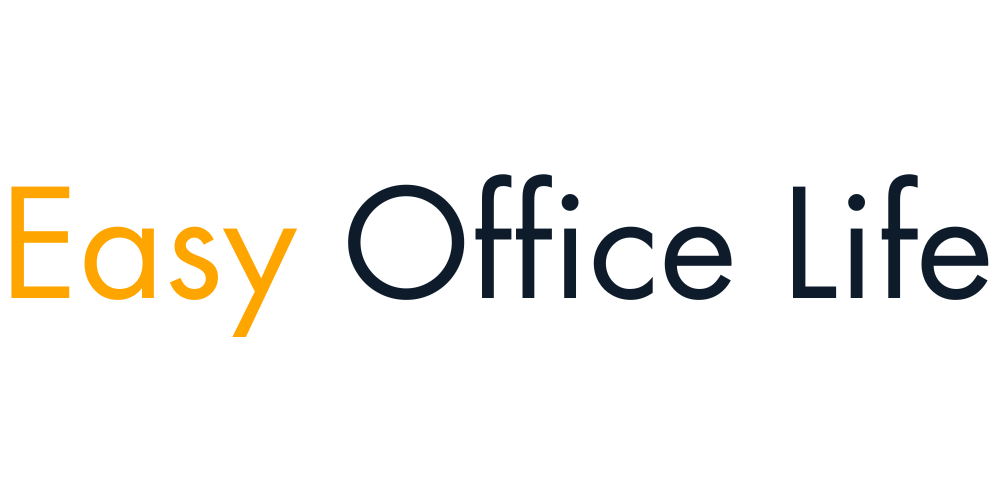
Introduction to Remote Work
The concept of remote work has seen a significant rise in popularity over the past decade, accelerated by advancements in technology and changing workplace dynamics. Today, a growing number of organizations and freelancers embrace flexible work arrangements, enabling them to operate outside traditional office settings. This shift has allowed businesses to tap into a global talent pool, enhance employee satisfaction, and improve work-life balance.
One of the most notable benefits of remote work is increased productivity. Many employees report that they can concentrate better without the usual distractions found in the office environment. The flexibility to tailor their workspaces and schedules also contributes to a more efficient workflow. Moreover, remote work eliminates commuting time, allowing individuals to dedicate more hours to their professional responsibilities or personal pursuits.
However, the rise of remote work comes with its own set of challenges. Communication can become more complex when teams are dispersed, leading to potential misunderstandings and diminished collaboration. Additionally, remote workers may experience feelings of isolation, which can impact their motivation and engagement levels. To navigate these hurdles effectively, organizations must prioritize the implementation of the best tools for working remote, ensuring seamless connectivity and collaboration among team members.
In this context, the importance of technology cannot be overstated. Organizations need to leverage advanced communication platforms, project management software, and time management tools to enhance productivity and foster a collaborative remote work culture. As companies increasingly recognize the significance of strategic investments in tools designed for remote work, finding the right solutions becomes essential. Understanding the benefits and challenges of remote work sets the stage for a deeper exploration of the best tools for ensuring successful remote operations.
Communication Tools
Effective communication is vital for remote teams, and utilizing the best tools for working remotely can significantly enhance collaboration and productivity. Among the highly regarded communication platforms, Slack, Microsoft Teams, and Zoom stand out due to their distinctive features and user-friendly interfaces.
Slack is widely recognized for its intuitive design that promotes organized conversations. Its channels allow teams to segregate discussions by project or topic, ensuring that all relevant information is easily accessible. Additionally, Slack supports various integrations with other tools, enabling users to share files, manage tasks, and keep track of important updates seamlessly. However, the extensive features can sometimes lead to information overload if not managed properly.
Microsoft Teams, on the other hand, combines chat, video conferencing, and file-sharing capabilities within one platform, thereby facilitating an all-in-one workspace. This tool is particularly beneficial for organizations already embedded in the Microsoft ecosystem, as it integrates seamlessly with applications like Word, Excel, and OneDrive. Teams offers robust security features and is known for its ability to host large meetings efficiently; however, new users may find the learning curve steep due to its extensive functionalities.
Lastly, Zoom has revolutionized remote communication predominantly through its video conferencing capabilities. Offering high-quality video calls even in low bandwidth scenarios, Zoom has gained popularity during the shift to remote work. Its features, such as breakout rooms for smaller discussions and virtual backgrounds for a more professional appearance, cater well to various meeting formats. However, concerns regarding security have been raised in the past, prompting the platform to implement enhanced security measures.
In conclusion, selecting the best tools for working remotely hinges on understanding the specific needs of your team. Each of these communication tools presents unique advantages and possible drawbacks, making it essential for teams to evaluate their requirements and preferences when adopting a solution.
Project Management Tools
In the realm of remote work, maintaining organization and ensuring effective collaboration are paramount. Project management tools have emerged as essential resources for remote teams to facilitate task tracking, communication, and workflow optimization. Among the myriad of options available, platforms like Trello, Asana, and Monday.com have gained prominence due to their user-friendly interfaces and diverse functionalities.
Trello is widely recognized for its simplicity and visual approach to project management. Utilizing a system of boards, lists, and cards, it allows teams to categorize tasks efficiently and monitor their progress at a glance. Trello is particularly advantageous for small to medium-sized teams that benefit from a straightforward yet effective workflow management system. Its flexibility enables users to customize workflows according to their specific needs, making it a suitable choice for various project scopes.
Asana, on the other hand, offers more robust features suitable for larger teams and complex projects. With capabilities such as task dependencies, timeline views, and detailed reporting, Asana assists teams in juggling multiple projects while maintaining control over deadlines. Furthermore, its integration with numerous other tools enhances its functionality, allowing teams to tailor their project management experience substantially. Asana is particularly beneficial for teams that require comprehensive tracking and collaborative capabilities.
Monday.com distinguishes itself with a highly customizable interface that caters to teams of all sizes. It offers a variety of templates tailored for diverse industries, streamlining the onboarding process for new users. Its visual nature enables project managers to gain insights quickly, making monitoring progress and resource allocation more efficient. The tool also supports automation features, which can considerably reduce repetitive tasks, allowing teams to focus on more critical project elements.
Ultimately, choosing the best tools for working remote involves evaluating the unique needs of a team and understanding the scope of projects to be managed. Each of these platforms has its strengths and can significantly enhance productivity when aligned correctly with team objectives.
Time Management and Productivity Tools
In the realm of remote work, time management and productivity are paramount for maintaining efficiency and meeting deadlines. Therefore, utilizing the best tools for working remote is essential to ensure that individuals can stay organized and focused. Numerous applications are available to assist remote workers in managing their time effectively and enhancing productivity.
One popular tool is Todoist, a task management application that helps users prioritize their to-do lists. Todoist allows remote workers to categorize tasks by projects, deadlines, and priority levels, making it easier to identify critical tasks. With its intuitive interface, users can quickly add and modify tasks as their priorities shift throughout the day. Todoist also integrates seamlessly with calendars, enabling users to visualize their workload and deadlines in one place.
Another useful resource is Harvest, which focuses on time tracking and project management. Harvest allows individuals and teams to log hours dedicated to specific tasks or projects, providing valuable insights into where time is being spent. This information can be invaluable for improving efficiency, as users can identify patterns and focus on areas needing attention. Additionally, Harvest offers reporting features that help create budgets for projects and keep track of expenses, making it perfect for freelancers and teams alike.
Lastly, RescueTime serves as a productivity tracker that monitors how users spend their time on various applications and websites. By providing detailed reports on time usage, individuals can recognize distractions and adjust their working habits accordingly. RescueTime empowers users to set goals and alerts, promoting self-awareness and encouraging better focus. By implementing these robust time management and productivity tools, remote workers can enhance their overall efficiency and make the most of their working hours.
File Sharing and Collaboration Tools
In today’s digital landscape, effective file sharing and collaboration tools are vital for remote teams aiming to maintain productivity and streamline workflows. These tools not only facilitate document sharing but also enhance real-time collaboration, enabling teams to work together regardless of their physical locations.
One of the most popular solutions is Google Drive. This versatile platform offers cloud storage along with a suite of productivity applications, including Google Docs, Sheets, and Slides. Users can create and edit documents collaboratively, with changes being instantly visible to all team members. Google Drive also allows users to manage file permissions effectively, ensuring that sensitive information remains secure while still fostering an environment conducive to teamwork.
Another leading tool is Dropbox, which has long been recognized for its simple and user-friendly interface. Dropbox provides an efficient way to share large files and folders, making it a preferred choice for teams that frequently handle media and other sizable data. The platform supports collaboration through shared folders and provides robust version control features, allowing users to revert to earlier file versions, which is especially useful in maintaining consistency across projects.
OneDrive, Microsoft’s cloud storage solution, integrates seamlessly with Office 365 applications. This makes it particularly advantageous for organizations already using Microsoft’s suite of software. OneDrive allows for real-time collaboration on documents, promoting teamwork and ensuring that all team members are on the same page in their projects. Its file sharing features include granular control over permissions, further enhancing security while promoting efficient collaboration.
Overall, selecting the best tools for working remote hinges upon the specific needs of your team. Whether it is for document creation, file sharing, or collaboration, Google Drive, Dropbox, and OneDrive offer robust solutions to support your remote working environment.
Video Conferencing Tools
In the evolving landscape of remote work, video conferencing tools have become an essential component for facilitating communication and collaboration among teams. These tools not only allow for real-time discussions but also play a pivotal role in maintaining the company’s culture and ensuring productivity despite physical distance. Among the myriad options available, three stand out for their robust features and user-friendly interfaces: Zoom, Microsoft Teams, and Google Meet.
Zoom has rapidly gained popularity as a premier choice for organizations seeking reliable video conferencing solutions. Its intuitive design enables users to host meetings easily, ranging from small team discussions to large webinars with thousands of participants. Features such as breakout rooms, screen sharing, and recording capabilities enhance its functionality, making it an ideal platform for interactive sessions and collaborative projects. Moreover, its compatibility with various devices allows remote workers to join meetings seamlessly, irrespective of their location.
In contrast, Microsoft Teams offers a more integrated experience by combining video conferencing with chat, file sharing, and project management tools. This all-in-one platform is particularly suited for businesses that already utilize other Microsoft products, as it facilitates a smooth flow of information across various applications. The ability to conduct video calls directly from channels dedicated to specific projects enhances team engagement and fosters effective collaboration. Additionally, security features provided by Microsoft make it a compelling choice for organizations concerned about data privacy.
Google Meet, on the other hand, is an efficient and user-friendly option for those who leverage Google Workspace. Its simple interface and direct integration with other Google services allow remote teams to set up and conduct video calls swiftly. It provides features like live captioning and recording, ensuring inclusivity and creating a comprehensive communication tool for diverse workforces. The constant updates and enhancements ensure that users experience a reliable and secure environment for their virtual interactions.
Each of these video conferencing tools caters to different needs, making it essential for remote workers to assess their specific requirements when selecting the best tools for working remotely. As video conferencing continues to shape the fabric of remote work, organizations can greatly benefit from their features to enhance communication and foster collaboration.
Remote Desktop and Virtualization Tools
As remote work becomes increasingly common, having reliable tools that enable employees to access their office computers from home is essential. Remote desktop and virtualization tools not only provide access to important files and applications but also ensure a seamless work experience comparable to being in the office. Among the top solutions available today are TeamViewer, AnyDesk, and Citrix, each offering unique features suited for different user needs.
TeamViewer is a prominent choice for many businesses, known for its easy setup and user-friendly interface. It allows users to connect to their office machines securely over the internet, making it an excellent choice for employees who require quick access to their work systems. TeamViewer employs advanced encryption protocols to safeguard data transmission, ensuring that confidential information remains protected during remote sessions. Furthermore, it offers various features such as file transfer, remote printing, and session recording, which enhance operational efficiency.
Another strong contender is AnyDesk, which emphasizes speed and low latency with its proprietary DeskRT codec. This tool ensures high-quality remote desktop connections, making it ideal for users who need to run graphics-intensive applications or conduct real-time collaborations. AnyDesk also prioritizes security, featuring bank-level encryption and the option for two-factor authentication. These attributes make it a robust solution for businesses concerned about data integrity and compliance.
Citrix, on the other hand, offers a comprehensive virtualization environment tailored for larger organizations. It stands out with its ability to deliver virtual desktops and applications across various devices, allowing users to work flexibly from any location. Citrix guarantees a high level of security through its extensive access controls and continuous monitoring features, making it a go-to choice for enterprises with stringent security requirements. By leveraging the best tools for working remote, companies can maintain productivity, ensure data safety, and support their employees effectively in a virtual workspace.
Cybersecurity Tools for Remote Work
As organizations increasingly adopt remote work policies, ensuring cybersecurity becomes paramount. Remote employees often access sensitive company data from various locations and devices, making it crucial to safeguard this information against potential threats. The best tools for working remotely should not only facilitate productivity but also secure sensitive data. This requires a robust cybersecurity strategy, incorporating various tools ranging from Virtual Private Networks (VPNs) to antivirus software and password managers.
VPNs play a critical role in protecting internet traffic by encrypting data exchanges between remote workers and corporate networks. This encryption helps shield sensitive information from cybercriminals, especially when utilizing public Wi-Fi networks. By investing in a reputable VPN service, organizations can ensure that their remote workforce maintains a secure connection to their cloud-based resources. It is advisable to choose VPNs that offer strong encryption protocols and a no-log policy to enhance privacy further.
In addition to VPNs, antivirus software is essential for remote workers to protect their devices from malware and other malicious attacks. Given the increasing sophistication of cyber threats, it is advisable to utilize comprehensive antivirus solutions that offer real-time protection and regular updates. Moreover, employees should practice safe browsing habits and recognize phishing attempts, which are common tactics used by cybercriminals.
Lastly, password managers are invaluable tools for remote teams. These applications store and encrypt passwords, allowing users to generate strong, unique passwords for each account without the need to remember them. Implementing a password manager can significantly reduce the risk of account breaches caused by weak or reused passwords. Organizations should educate their remote workers on the importance of these cybersecurity tools, ensuring they understand not only how to use them but also how they contribute to the overall security of sensitive company information.
Conclusion and Future of Remote Work Tools
As we have explored throughout this guide, the best tools for working remotely are integral to creating an efficient, productive, and collaborative work environment. These tools not only facilitate communication but also enhance team dynamics, making remote work a viable alternative to traditional office settings. The diverse range of applications discussed, from project management platforms to communication software, exemplifies how technology has evolved to meet the needs of a workforce that is increasingly reliant on remote connectivity.
Looking ahead, it is essential to anticipate the future of remote work tools and the innovations that may emerge to further streamline processes. As artificial intelligence (AI) and machine learning continue to advance, we can expect these technologies to play a more significant role in enhancing remote work solutions. Intelligent scheduling tools, automatic transcription services, and enhanced data analytics are just a few examples of how future tools may redefine productivity in remote settings. Additionally, the integration of virtual reality (VR) and augmented reality (AR) into remote collaboration platforms may offer immersive experiences that simulate physical office environments, fostering a sense of community among remote teams.
Furthermore, as businesses adapt to a more flexible working culture, the demand for tools that allow seamless cross-team collaboration and integration is likely to grow. Future tools will need to not only enhance user experience but also prioritize security and data privacy, ensuring that remote work does not come with increased risks. In this ever-evolving landscape, staying informed about the best tools for working remotely and the trends shaping their development will be crucial for both individuals and organizations.

